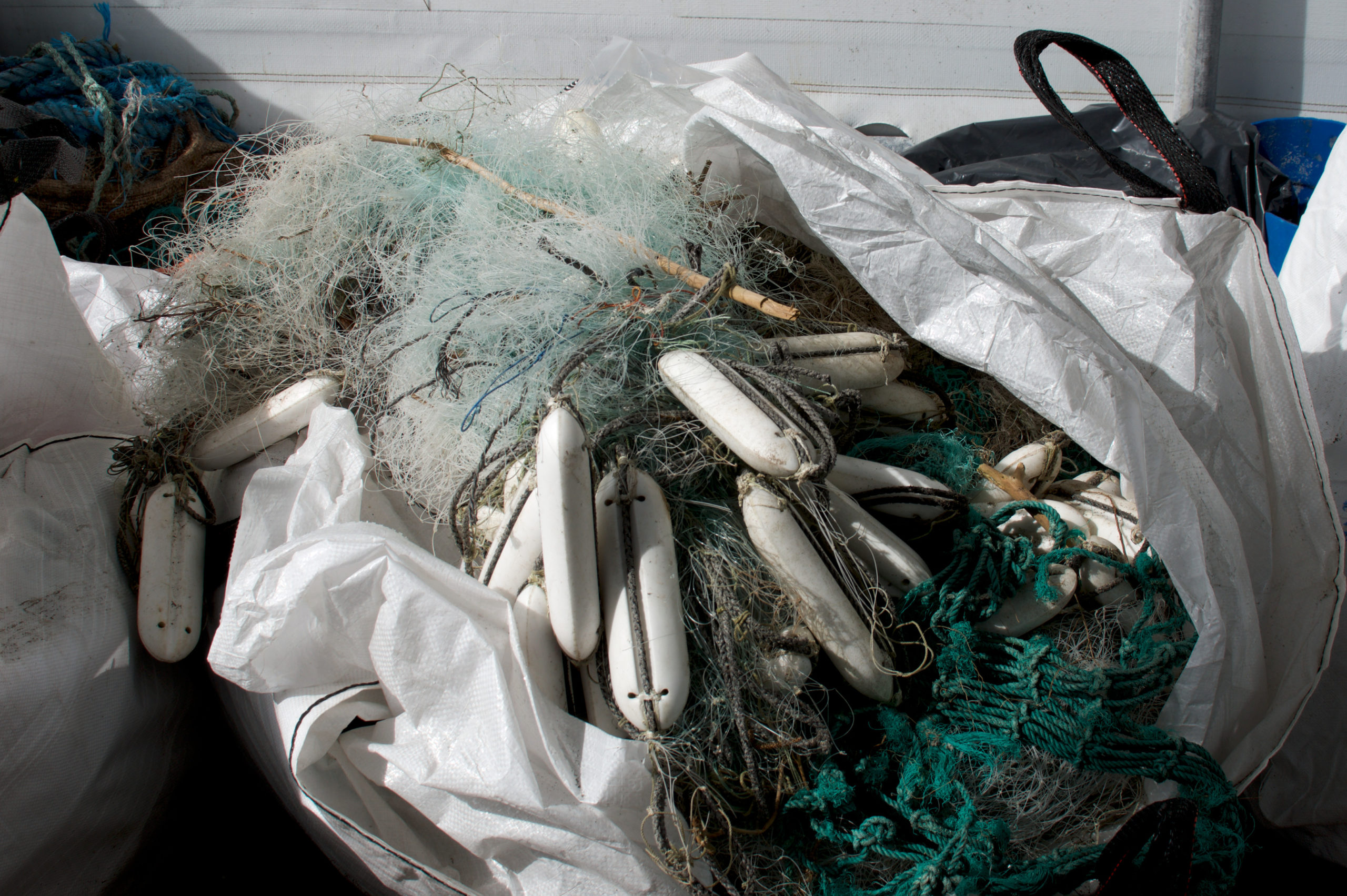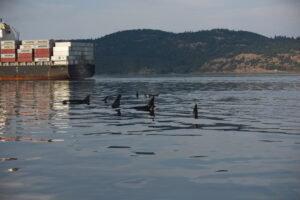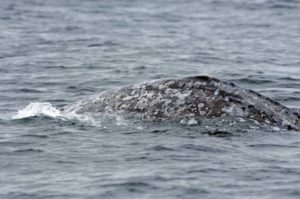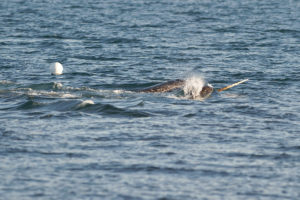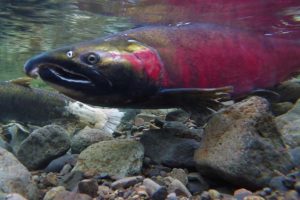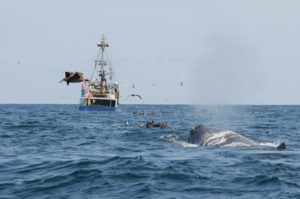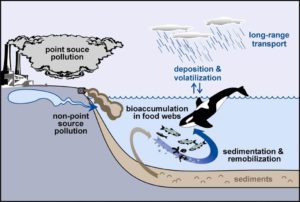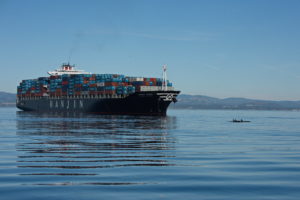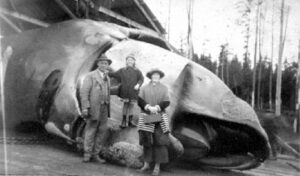In the North Pacific, underwater noise has doubled in intensity every decade for the past 60 years. Noise from shipping, seismic exploration, and military sonar contribute to underwater noise and may impact the ability of cetaceans (whales, dolphins, and porpoises) to conduct critical life processes such as foraging, finding mates, and navigating through their underwater environment. This impacts various species of whales in different ways.
Toothed whales:
Toothed whales rely on echolocation and acoustic communication for foraging, navigating, and socializing. Acoustic disturbance from sources like vessel noise and construction disrupts these crucial processes, affecting their ability to find prey, maintain group cohesion, and engage in mating behaviors. Species that live in shallow coastal areas are particularly vulnerable due their overlap with human activity. Slowing down vessel speed has shown promising results in reducing underwater noise, with a trial in Haro Strait demonstrating a significant reduction in vessel noise levels and ambient noise when ships voluntarily reduced their speed. These findings support speed reduction as an effective measure to mitigate the impact of vessel noise on killer whale populations in the Salish Sea.
Baleen whales:
Ambient noise from human activities can mask the low-frequency calls of baleen whales, which are crucial for their social communication. The increasing levels of low-frequency noise from shipping, seismic exploration, and military sonar pose a significant threat to the recovery of blue, fin, and humpback whales in British Columbia, as it can hinder their vocalizations and disrupt their habitat.
Offshore species:
Offshore species, including beaked whales such as Baird's and Cuvier's beaked whales, are susceptible to the negative impacts of noise pollution. Anthropogenic noises in offshore environments like seismic exploration and military sonar can disturb and harm these whales, as evidenced by strandings and necropsies indicating gas-bubble disease caused by their behavioral responses to noise. Avoidance behaviors exhibited by Cuvier's beaked whales, such as intense swimming and reduced surface durations, increase their vulnerability to gas bubble embolism.
